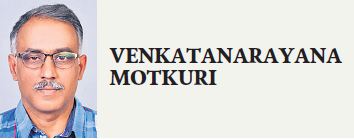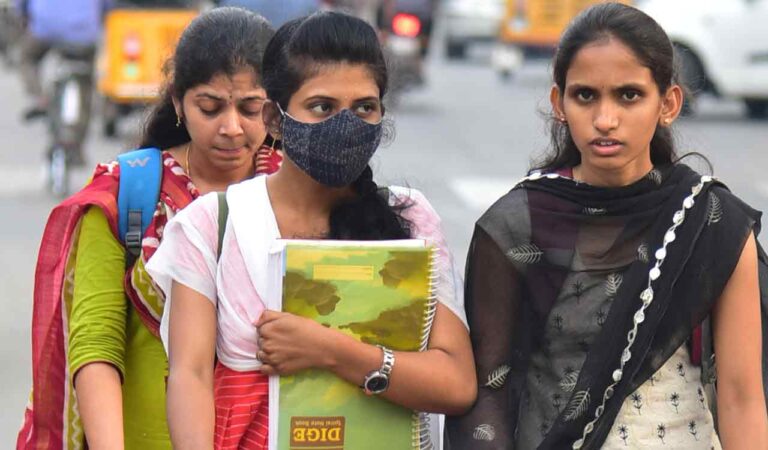Estimates based on household surveys provide a more complete picture of the educational status of the college-age population than the All India Higher Education Survey.
Post Date – 12:50 AM, Wednesday – 11/23/22

by Venkatanarayana Motkuri
Hyderabad: The All India Survey of Higher Education (AISHE) 2019-20 puts Telangana’s Gross Enrollment Ratio (GER) at 36%, compared to the national average of 26%. We see states and countries with higher percentages in 2019-20. The explained differences and the proposed estimates are as follows.
birth factor
First, for country-level estimates, the net migration of students is a factor for variance. If the number of students from a state (eg Telangana) is enrolled in any higher education course at an institution outside that state or within the jurisdiction of another state than the number of students from other states is enrolled in an institution in that state (Telangana), AISHE-based GER underestimates the state (Telangana).
AISHE does not consider a student’s place of birth, but rather the location of the educational institution or state-level political/administrative jurisdiction. The AISHE-based GER considers the ratio of all students (regardless of their place of birth) attending in-state institutions to the in-state college-age population (ages 18-23). The same logic applies to differences in country-level estimates due to net inflow/outflow of students.
Household survey-based estimates, on the other hand, calculate the in-state student population based on the residency status of all students attending out-of-state institutions.
Accreditation body
Second, AISHE does not cover all educational institutions offering post-secondary education programmes. Its coverage mainly includes institutions accredited by UGC or AICTE, ICMR, ICAR etc. Many institutions are not accredited by regulators, but graduates from these institutions are recognized by industry and the job market. For example, Indian business schools are not accredited by higher education regulators, but their graduates are renowned globally.
Additionally, AISHE institutions must be registered with the Ministry of Education in order to report. But not sure if all recognized institutions follow this. Also, even among these registries, it can be found that a considerable number of institutions do not report annually for AISHE. According to AISHE 2019-20, 100 institutions in Telangana are not reporting; some welfare residential degree colleges are yet to report for AISHE.
Household survey-based estimates account for all students studying outside the state or country as well as those missed by AISHE coverage. National household surveys like PLFS collect information on the educational level of the population and the enrollment/current attendance status of the population under 30 years of age. In this regard, in any school or college age group (6-18 or 18-23), the children/population within that group can be divided into those who are attending school and those who are not – who have never Enrollment Enrolled but not attended (i.e. dropped out).
formal education
Estimates of the school-age population according to PLFS-3 (2019) show that Telangana is close to universal enrollment as 99.5% of children aged 6-14 and about 92% of children aged 15-17 are enrolled in education. The national averages are 96% and 82%, respectively. Ensuring formal education for all children aged 6-14 is a national and provincial (state) constitutional mandate. In addition, it is a global norm that all children under the age of 18 must complete schooling (grades 1 to 12). Telangana is close to a constitutional mandate, close to a global norm.
Estimates based on PLFS-3 show that only 2% of Telangana’s university-age population (18-23 years old) has never attended any educational institution at any age to date, but nearly 46% of them attended earlier but Not currently attending school, meaning they have dropped out of school, while 52% of them are attending an educational institution.
It was found that 21% of the university-age population in Telangana dropped out before high school, 11% dropped out after high school and the remaining 14% went on to higher education (UG and/or PG ) educated them out of school. Similarly, 9.6% of Telangana’s university-age population is pursuing (currently enrolled) high school or below, with the remaining approximately 41% having completed high school and pursuing higher education.
One should note that based on the household survey of PLFS-3 (2019-20), the estimated percentage of college-age (18-23 years old) population in Telangana state attending tertiary or tertiary education is 41%, i.e. 5 to AISHE (2019-20) the GER estimate is several percentage points higher. The all-India average GER is 28.5% (PLFS-3), which is only two percentage points higher than the national average GER based on AISHE.
Additionally, Telangana has a very high percentage of university-age population of almost 55% (41% currently enrolled and 14% completed), compared to the national average of 37% (28.5% and 8.5%, respectively).
compare performance
Looking at the state’s relative performance, Telangana’s GER (AISHE) is 10 percentage points above the national average, while a revised estimate based on the Household Survey (PLFS-3) shows the state to be 18.5 percentage points above the national average percentile national average. Furthermore, Telangana ranks fourth among states in this regard (PLFS-3 estimate), after Pondicherry (67%), Tamil Nadu (61%) and Kerala (57%) %).
In absolute terms, Telangana’s university-age population is estimated to be around 4.56 million. Household surveys indicate that an estimated 2.52 million students have completed or are currently enrolled in higher education courses. Of the latter, 630,000 completed their studies and 1.88 million are currently in higher education. AISHE estimates that Telangana’s higher education enrollment is close to 1.4 million. Estimates from the two sources vary widely.
In conclusion, the revised estimate based on the Household Survey (PLFS-3) is reasonable because it more fully reflects the educational status of the college-age population as a standard reference group, and thus is the denominator of higher education performance indicators. Among the college-age population, those who have completed post-secondary education should not be overlooked. They may not simply be considered dropouts because they have reached the last mile of the education system.
Compared to AISHE’s GER, estimates from household surveys suggest a higher proportion of people pursuing higher education programs because of their coverage and the number of students studying outside state jurisdiction and at state or other institutions, but not in AISHE range.

(The author is from the Education Research Group of the Center for Economic and Social Research [CESS],Hyderabad. )
